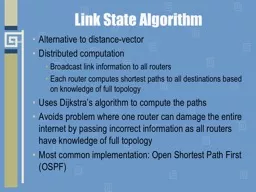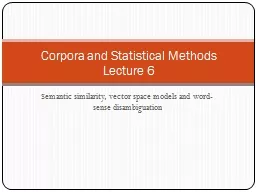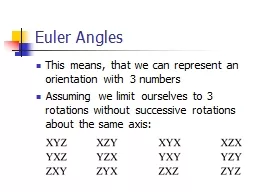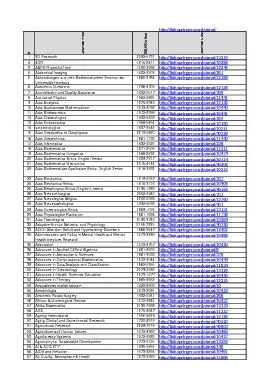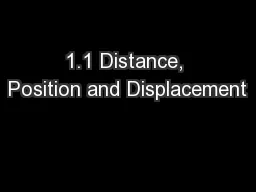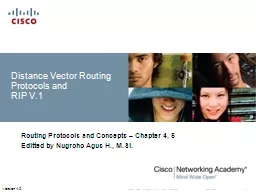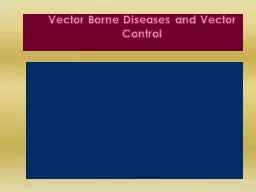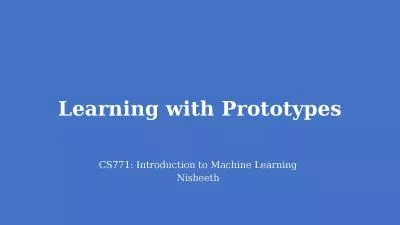PPT-Link State Algorithm Alternative to distance-vector
Author : danika-pritchard | Published Date : 2018-09-21
Distributed computation Broadcast link information to all routers Each router computes shortest paths to all destinations based on knowledge of full topology Uses
Presentation Embed Code
Download Presentation
Download Presentation The PPT/PDF document "Link State Algorithm Alternative to dist..." is the property of its rightful owner. Permission is granted to download and print the materials on this website for personal, non-commercial use only, and to display it on your personal computer provided you do not modify the materials and that you retain all copyright notices contained in the materials. By downloading content from our website, you accept the terms of this agreement.
Link State Algorithm Alternative to distance-vector: Transcript
Download Rules Of Document
"Link State Algorithm Alternative to distance-vector"The content belongs to its owner. You may download and print it for personal use, without modification, and keep all copyright notices. By downloading, you agree to these terms.
Related Documents

